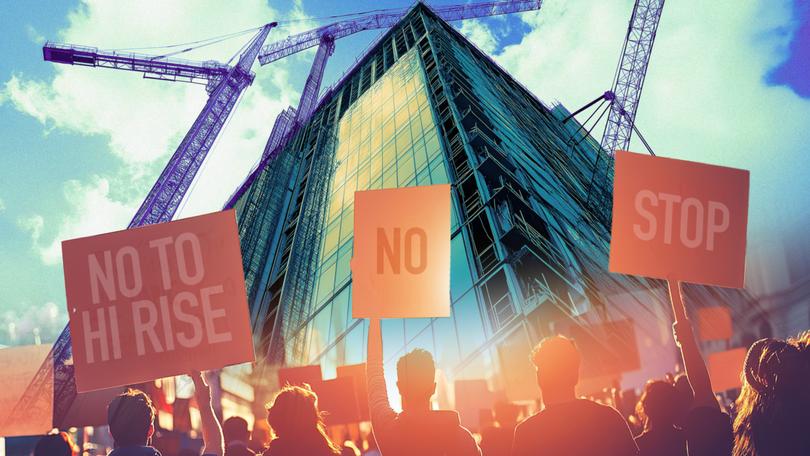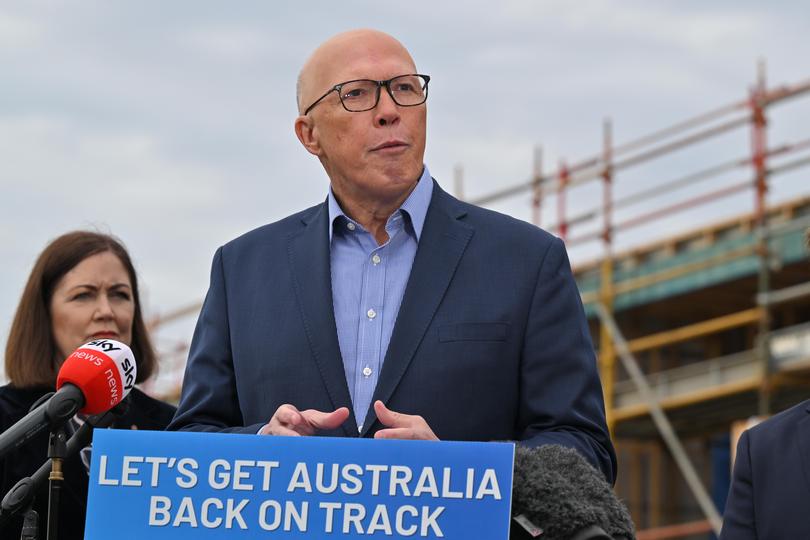Federal election 2025: Albanese and Dutton offer housing solutions for a problem they may not be able to fix

Last Saturday, 40 Sydney residents met to discuss how to kill off an apartment building.
They complained about plans, moving towards a resolution after more than a decade of local opposition, to replace a warehouse in inner-city Leichhardt with 210 badly needed homes.
When someone mentioned it would allow younger residents to move into the ageing suburb, one person said, according to observer Justin Simon: “We’re all too old to care about kids or schools. We just don’t want more people.”
Sign up to The Nightly's newsletters.
Get the first look at the digital newspaper, curated daily stories and breaking headlines delivered to your inbox.
By continuing you agree to our Terms and Privacy Policy.In that self-interested comment lies an honesty that helps explain why both the main political parties are struggling to solve one of the most challenging problems facing the country: how to find homes for the 3.6 million Australians in their twenties, and millions more immigrants who will arrive over the next decade.
Top worry
Polls show the cost of housing is among Australians’ top concerns. Prices are so high that many Millennials question if they will ever own property, a problem their Baby Boomer grandparents did not have.
The issue is so acute that both parties have made housing policies central to their re-election pitches.
The Labor Government says it is investing $33 billion in housing, and will build 55,000 low-cost homes. The Coalition has promised to reduce foreign students by about 80,000, and invest $5 billion in new-housing services, including water access.
The Liberal Party publishes ads daily quoting leader Peter Dutton promising young Australians they will not have to compete against foreigners to buy homes.

Experts say both parties’ policies will help, but the problem is too big to be solved by the federal government alone.
Immigration raises the cost of housing. But economists say it is necessary to rebalance the population. With birth rates falling, tax-paying workers are needed to pay for the large retired population.
The Coalition’s immigration cuts would reduce housing prices and rents by about 11 per cent over the next decade, according to Peter Tulip, an economist at the Centre for Independent Studies, a Sydney think tank.
The Government’s 19-month-old, $10 billion housing fund has not built any houses. Instead, it has bought about 500, according to Liberal senator Andrew Bragg, which did not add to the supply of housing.
Is the supply the answer?
Some economists argue the solution is to build more homes in the inner cities, where there are a lot of services, rather than on the urban fringes. Many policy-makers agree with them. But the rules are set by councils and states, and are not easy for the Federal Government to influence.
“If we allow more housing to be built, where people want to live, you’ll get a lot more of it,” said Brendan Coates, a housing expert at the Grattan Institute think tank in Melbourne.
An anti-Nimby (not in my backyard) movement, the Yimbies, has emerged from the ranks of young renters to challenge opposition to new housing. Labor governments in Victoria and New South Wales are also overruling councils which want to preserve quiet streets.
Two months ago the NSW government changed planning rules to make it easier to replace traditional houses with apartments, townhouses and duplexes. The changes are so new that even planning experts are still trying to work them out.
But they may lead, over time, to the replacement of stand-alone houses within 800 metres of many shopping centres and train stations across Sydney, Newcastle and Wollongong.
Selling rush
The changes appear to have already triggered a burst of property speculation. House owners are striking agreements with neighbours to sell their combined properties to developers, real estate agents say, arrangements that should deliver them more money than selling individually.
On Sydney’s lower north shore, one of the Australia’s most expensive property regions, half a dozen selling syndicates have been created in past two months, according to Tim Abbott, a veteran real estate agent at Ray White who specialises in land used for apartment developments. Their combined land might be worth more than $200 million, he said.
“It’s the biggest change I had ever seen in my career,” he said on Thursday.
Mr Abbott, who said owners should expect increases of 30 to 50 per cent, is selling blocks in Mosman and Cremorne to developers on behalf of 12 house owners who have formed two syndicates.
The ABC’s 7.30 program reported this week that a house in Rose Bay, a suburb on the other side of Sydney Harbour, sold last month to an apartment-builder for $16 million. Two years ago it was listed for $8 million.
‘An extreme example of nimbyism’
The Yimbies may be in the ascendancy, but the battle over the future of Australia’s cities is far from over. Even though approval for big developments has been taken away from councils in Sydney and elsewhere, local government planning staff remain responsible for vetting and processing development applications.
Many councils, especially in affluent areas dominated by stand-alone houses, remain hostile to apartments and duplexes, which upset existing residents who are forced to share their suburbs with more people. They can use bureaucracy to slow down development.
The Leichhardt building residents opposed on Saturday was formally proposed to the local council in 2022. The council’s objections were overruled in 2023.
The State Government is now taking feedback on whether the land should be rezoned for residential use. If it is, the developer will have to go through the planning-approval process, which could take several years.
Inner West Council, the local government for the area, is notorious in Sydney for opposing development.
Last year the State Government told the council it needed to approve 1,560 homes a year to help NSW meet an annual target of 75,000 homes, which in turn contributes to the nationally agreed target of 1.2 million over five years.
After six months, the council had reached only 13 per cent of its target, a figure not unusual across the city.
As residents complained at a meeting about replacing a warehouse with apartments near parks, schools, shops and transport links, a leader of the Sydney Yimby group, Mr Simon, took notes to use in a campaign to get them built.
“It’s an extreme example of nimbyism and hypocrisy,” Mr Simon said on Thursday. “This is a perfect spot for apartments.”

